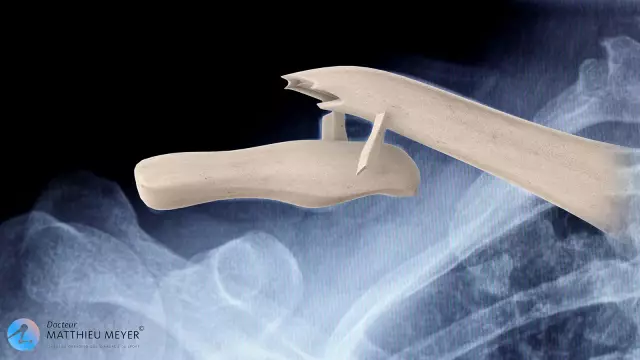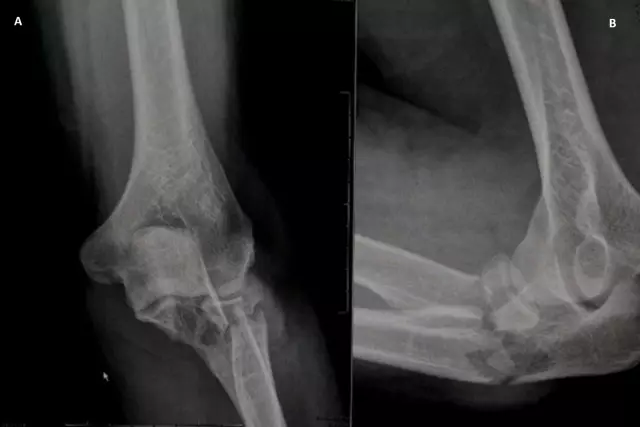- Author Rachel Wainwright [email protected].
- Public 2023-12-15 07:39.
- Last modified 2025-11-02 20:14.
Displaced clavicle fracture

One of the most common injuries of the musculoskeletal system is a displaced clavicle fracture.
Displaced clavicle fracture: symptoms and diagnosis
Anatomically, the clavicle connects the scapula to the sternum, the first rib and the handle of the sternum. Fracture of the clavicle due to passage through the birth canal in newborns is a fairly common occurrence. In childhood, such trauma is also not uncommon.
Only by the age of 20 do the bones of the clavicle reach their maximum strength. Clavicle fractures in adults are most often caused by falls or bumps. This kind of injury is also common in athletes.
Clinical signs of a clavicle fracture are:
- swelling and soreness at the fracture site;
- hemorrhage;
- smoothness of the supraclavicular fossa;
- deformation;
- shortening of the shoulder girdle;
- omission and displacement of the shoulder.
The standard of treatment provides for the exclusion of damage to the subclavian vessels and nerves, although in practice they are quite rare. X-ray diagnostics is mandatory in this case.
A clavicle fracture can be open or closed. An open one can be diagnosed with the naked eye, while one can finally be sure of a closed clavicle fracture only on the basis of an X-ray.
The anatomical features of this section determine the most common dislocation of the fracture, namely, the middle part (diaphysis) of the clavicle. The presence of developed musculature in the clavicle region leads to frequent displacements in the area of fractures.
Symptoms of a displaced clavicle fracture are:
- severe pain that does not allow you to raise your hand up;
- characteristic crunch when trying to raise the hand up;
- deformation in the clavicle;
- displacement of the shoulder forward and downward.
Treatments for displaced clavicle fracture
By its principle, the treatment of a displaced clavicle fracture can be both conservative and operative.

The essence of the conservative treatment for a closed fracture of the clavicle with displacement is immobilization (immobilization) of the limb. After the injury, the displacement of bone fragments is eliminated, the length of the clavicle is restored and fixed with the help of a kerchief bandage or Delbe's rings, which pull the shoulder back and to the side. Depending on the severity of the injury and the age of the patient, the duration of the fusion period is three to seven weeks.
The disadvantages of conservative treatment of displaced clavicle fractures are deformation and shortening of the forearm. In the place of displacement, callus can often form, which decreases over time, but still remains.
Displaced clavicle fracture: osteosynthesis operation
If after the doctor's attempt to eliminate the displacement of the clavicle fracture - reduction - a displacement remains larger than the size of the bone itself or 2 cm, then surgical treatment is indicated. Also, an indication for surgery for a displaced clavicle fracture is the patient's desire, dictated by aesthetic considerations.
The essence of osteosynthesis is to eliminate the displacement and fixation of the bone using a special metal structure. Most often, this design consists of plates and screws or pins.
As with any treatment, surgery for displaced clavicle fractures is also not always successful. In 1% of cases, there is a non-union of the clavicle or infectious complications - osteomyelitis. In the postoperative period, patients are shown antibacterial and analgesic drugs, and after fusion - physiotherapy exercises to restore limb functions.
Found a mistake in the text? Select it and press Ctrl + Enter.






